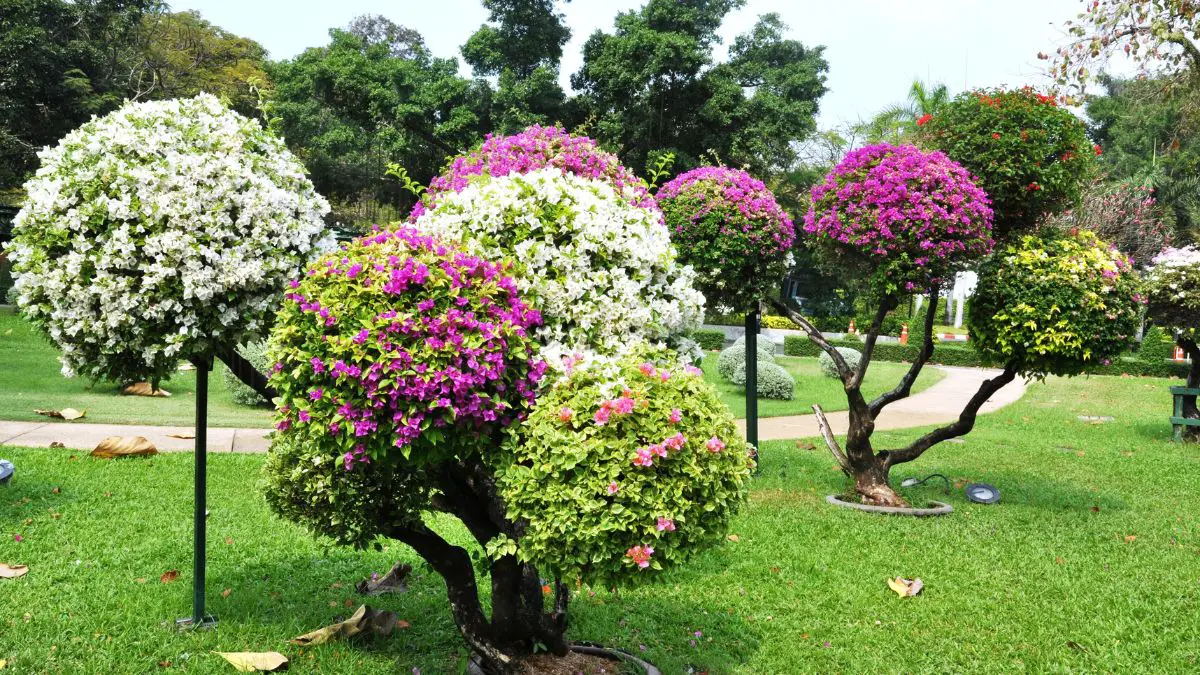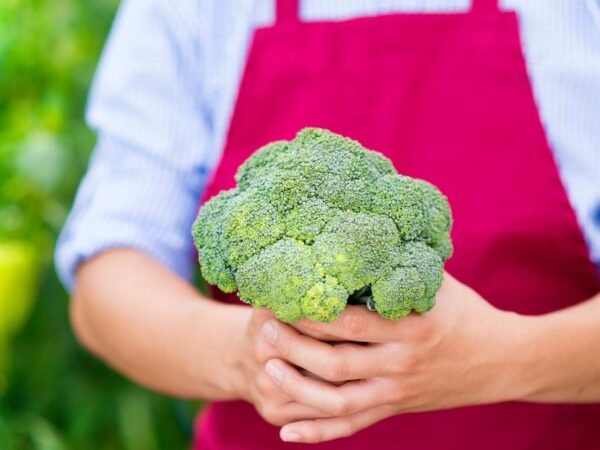Bougainvillea cuttings water propagation is the best way to grow new plants. This warm-weather beauty, covered in colorful flowers, is used extensively in subtropical and tropical cities such as Los Angeles.
To ensure proper propagation, choose strong cuttings—preferably 6 to 8 inches long—and strip the lower leaves. Put them in a container of clean water, making sure the leaf nodes are immersed.
After a few weeks roots will produce so can be moved into the soil. This approach offers a simple technique for cultivating bougainvillea and nurtures a deeper relationship to gardening.
TUNE IN TO LEARN THE STEP BY STEP PROCESS AND BEST TIPS FOR SUCCESSFUL PROPAGATION! Now armed with this information, your yard will be a splendid mass of color.
Key Takeaways
- Knowing why propagating bougainvillea cuttings is important will allow you to grow your garden even further while giving you faster results than planting seeds.
- Using water propagation simplifies the rooting process. You’ll be able to monitor the progression of roots forming and reduce the chance of soil-borne diseases.
- Step 1 — Choose your cuttings Choose healthy stems from the mother plant. Choose firm cuttings that are free of stress signs for greater rooting success.
- To ensure your roots are growing healthy and strong, be diligent about water quality, changing the water often, and making sure it’s room temperature.
- Be cautious with the light as well, giving indirect sunlight so the cuttings don’t overheat and wilt while they’re growing roots.
- Once rooted, be sure to acclimate your bougainvillea cuttings to soil. Follow our tips on keeping bougainvillea cuttings healthy and watch them flourish, filling your yard with vibrant color.
Understanding Bougainvillea Propagation
Bougainvillea propagation is an essential skill for growing more of these colorful, sprawling beauties in your landscape. The way you propagate bougainvillea will have a lasting impact on how quickly they will grow and the health of the plants. Using cuttings, particularly in the spring when the plant is actively growing, provides faster results than using seeds.
With cuttings you get instant genetic uniformity and quicker flowering in many cases.
1. Why Choose Water Propagation?
Water propagation makes the rooting process easy for bougainvillea cuttings. By setting cuttings in water, gardeners can keep a close eye on the progress of roots, something that can be much trickier in soil. This technique produces a more controlled environment, reducing the chances of soil-borne pathogens.
For the best results, maintain water temperature at approximately 22°C (72°F). Change the water every few days to keep it fresh.
2. Benefits of Using Cuttings
It’s possible to get the most new bougainvillea plants from one mother plant when you use cuttings. This technique is cost-effective since cuttings will root much more quickly than seeds would take to germinate. After about two months, roots will usually start to show, and these should be at least 2-3 inches long before transplanting.
This results in faster establishment and flowering in the garden.
3. Overview of Bougainvillea Varieties
Bougainvillea have a wide selection of varieties available for every climate and look. Popular options include the timeless ‘Bougainvillea glabra’ for its endurance and stunning color palette. When selecting, look for features such as flower colors and growth patterns to match desired outcomes in your garden.
Choosing the right variety can help you avoid common mistakes, enjoy the most dazzling displays, and keep healthy plants.
Preparing for Propagation
With a little preparation, bougainvillea cuttings can be one of your most successful propagations. Collect proper materials and consider seasonal weather conditions to prepare for success.
Keep the mother plant happy. The first step to starting a successful propagation process is to keep your mother plant happy.
1. Gather Essential Materials
Start by gathering up the basic materials you’ll need for propagation. This includes:
- Clean cups or jars for holding cuttings
- Clean, sharp scissors or pruning shears (dipped in rubbing alcohol to sterilize are best)
- Rooting hormone to enhance root development
- Fresh, clean water to sustain the cuttings
Creating a list and organizing these materials in advance will help expedite the process and cause less interference when beginning propagation.
2. Identify the Best Time for Cuttings
Timing is everything when it comes to propagating cuttings. Spring, especially after flowering, is known to be the best time to take bougainvillea cuttings, when the plant is going through a growth spurt.
Watch your environmental conditions closely. Ideal rooting temperatures are 65–75 °F (18–24 °C). Choose times when the plant is most healthy to ensure optimal results.
3. Select Healthy Stems from the Mother Plant
Choose the most vigorous stems, ideally 4-6 inches long, that show no signs of stress or damage. Softwood cuttings are especially ideal for water propagation.
By taking several cuttings, you’re setting yourself up for more success. Place each cutting into the water at a slight angle to promote several nodes giving rise to roots.
Step-by-Step Guide to Propagating Bougainvillea Cuttings in Water
Propagating bougainvillea cuttings in water can be highly successful, if you follow this step-by-step guide. This guarantees that you are taking each step the right way and allows you to follow along and adapt your approach with ease.
You will need to have patience as the length of time it takes to root can be quite different.
1. Take and Trim Your Cuttings
Start by cutting stems at an angle to increase the surface area for water absorption. Shoot for cuttings that are 6-8 inches long, with at least 2-3 leaf nodes.
Cut off extra leaves to limit the amount of moisture escape, so the cutting can put all its energy into growing roots.
2. Prepare Cut Ends for Optimal Growth
Optional: Dip the cut ends in rooting hormone to help promote faster root generation. Trim off any dead ends or damage.
Then, allow the cut ends to callous over for a day to increase your chances of successful rooting.
3. Place Cuttings in Water Correctly
You can use a small paper cup, half filled with water, standing the cuttings in it so that only the cut ends are in the water.
A broad-mouthed vessel will provide the best air circulation and humidity, which help with rooting.
4. Maintain Ideal Water Conditions
Replace the water every 2-3 days to prevent it from stagnating and losing oxygen. After two days, it may help to add an iron powder solution in diluted form in order to maintain rich nutrient levels.
Room temperature water prevents shocking your cuttings.
5. Monitor Light Exposure for Root Development
To ensure successful bougainvillea propagation methods, avoid direct sunlight exposure to prevent cooking the bougainvillea cuttings. Once roots begin to form, gradually introduce the cuttings to brighter light using filtered sunlight for a more supportive environment.
Conditions for Successful Rooting
Successfully propagating bougainvillea cuttings in water relies on ideal environmental conditions, including stable temperatures and good water and light control, which are crucial for the propagation success of these colorful climbing plants.
1. Optimal Water Conditions (pH, Temperature)
Keeping a neutral pH level in the water is crucial in order to promote strong and sturdy roots. Ideally, the pH should be between 6.0 and 7.0. Maintaining water temperatures between 22°C (72°F) provides ideal rooting conditions.
Consistently monitoring the surrounding water quality is extremely important as any buildup or hazardous compounds may affect overall development and vitality.
2. Importance of Frequent Water Changes
Changing the water every few days ensures that it doesn’t stagnate and encourages stronger root growth. Stagnant water can quickly become depleted of oxygen, putting the cuttings at risk of asphyxiation.
It’s equally important to watch for algae or fungus. When it does, frequent water changes are essential to protect cuttings from harmful pathogens. Frequent water changes help ensure that your cuttings get enough oxygen, which is crucial for successful root formation.
3. Understanding Rooting Hormones
By using rooting hormones, you can encourage quicker root growth for bougainvillea cuttings. When applying these hormones, strictly following the instructions below will increase the effectiveness of the hormone.
Consider testing out different rooting hormones. Using this method will allow you to identify which option works best for your particular cuttings, setting them up for success.
Troubleshooting Common Challenges
Propagating bougainvillea cuttings in water can be very rewarding, but it requires patience and care to ensure a successful growth cycle. By anticipating and correcting possible issues from the beginning, you’ll vastly improve your chances of producing quick sprouts from your cuttings.
1. Identifying Early Signs of Stress
Check cuttings daily for early indicators of stress. Leaves that are yellowing or wilting are a sign that the cuttings do not like their environment.
Monitor for signs of mold or fungus, which usually indicates excessive watering or poor air flow. If you’re experiencing any of these challenges, don’t wait—do something today!
Change the water level or increase the air circulation to save your cuttings.
2. Solutions for Root Rot Prevention
Known as a silent killer, root rot is another prevalent challenge that can easily destroy all your hard work. To fix this, make sure your containers have drainage holes so water can’t pool.
Monitor moisture regularly. It is important to keep the soil consistently moist without being waterlogged.
Utilizing sterilized tools when working with cuttings is another way to reduce the chance of introducing pathogens that cause root rot.
3. Adjusting Conditions for Better Outcomes
Flexibility is key to the propagation process. Adjust light and soil moisture according to what your bougainvillea cuttings require.
Try new settings and conditions to determine the best combination of these factors for your clone’s rooting success. Experiment with different humidity and temperature settings to achieve optimal results.
So stay loose and watch the bloom, it will require recalibrating as you start to understand all that it brings and what’s most effective.
Alternative Propagation Techniques
Though propagating bougainvillea cuttings in water is a tried and tested method, exploring bougainvillea propagation methods can enhance your gardening skills. By diversifying propagation strategies, you create opportunities to cultivate the best colorful climbing plants for your unique needs.
1. Exploring Layering Methods
Layering is an easy technique that allows home gardeners to propagate bougainvillea right from the parent plant. Step one—select a stem to propagate the plant from.
Next, bend it to the ground and bury part of it with soil, leaving the tip above ground. It doesn’t take long—roots will begin to grow in the buried section.
This will develop a new plant which you can conveniently cut free and relocate. This second technique is great for gardeners wanting to grow their own bougainvillea without resorting to just cuttings.
It helps them develop a more natural growth process, frequently producing healthier, more robust root systems.
2. Seed Propagation Insights
For anyone looking for a more involved, longer-term project, seed propagation provides a different path. This process consists of harvesting seeds from fully developed bougainvillea inflorescences, followed by seeding in sterile, nutrient-rich substrate.
As with any propagation method, this way can be difficult and long, usually calling for patience and diligent cultivation.
Understand that it could take many weeks for seeds to germinate and realize that not all seeds will result in viable plants.
The potential rewards are great! When gardeners grow bougainvilleas from seed, they have the opportunity to create one-of-a-kind varieties and truly enjoy the entire lifecycle of their plants.
Tips for Successful Bougainvillea Care Post-Propagation
After you’ve mastered bougainvillea cutting propagation in water, learn how to care for your new plants. These steps combined are highly significant in ensuring that your newly propagated plants grow vigorously and healthily. Moving from water to soil and caring for your new plants are important steps.
By following these tips on post propagation care, you’ll have a healthy bougainvillea garden.
1. Transitioning from Water to Soil
Start by slowly acclimating your rooted cuttings to dirt. This technique goes a long way in reducing the transplant shock that can slow down development. Begin by combining potting soil with the moisture you used while propagating the plant.
This new environment can be stressful, but having that familiar environment calms the transition down. Stay on top of moisture levels, because both overwatering and underwatering can cause stress in the new plants.
So a well-draining soil mix goes a long way in preventing potential issues like root rot.
2. Nurturing New Plants for Growth
Once your bougainvillea cuttings are safely planted in the soil, set a regular watering routine. These plants like to dry out a bit between waterings. Adequate light is important for vigorous growth.
Place your bougainvillea in a location where it can receive the most sun possible, preferably six hours of indirect sunlight daily. Provide them with a diluted general-purpose fertilizer every 2–4 weeks to help them grow strong.
Monitor conditions like temperature and humidity, since bougainvillea is a subtropical plant. By focusing on these key aspects, you’ll ensure your bougainvillea thrives and continues to bring vibrant colors to your garden.
Conclusion
Propagating bougainvillea cuttings in water is an easy method to grow your garden. Follow these tips and you’ll be well on your way to a hassle-free show of colorful blooms. Pay special attention to choosing strong cuttings, keeping the water level adequate, and getting enough light. Don’t forget to monitor your cuttings for signs of new growth or trouble.
Experiment with various techniques to see what produces the best results. So whether you commit to water propagation or experiment with ways to propagate in soil, have fun growing new friends. Begin propagating now so that you have the vibrant colors and tropical greenery of bougainvillea flourishing in your space. Your yard is worth it, too.
Frequently Asked Questions
How long does it take for bougainvillea cuttings to root in water?
Bougainvillea cuttings typically take 2 to 4 weeks to develop roots in water, so be patient and ensure they receive plenty of sun during this growth cycle.
What is the best time of year to propagate bougainvillea?
The best time to propagate bougainvillea cuttings is in early spring or early summer when the plant is actively growing, ensuring optimal conditions for successful bougainvillea propagation methods.
Can I use any type of water for rooting bougainvillea cuttings?
When rooting bougainvillea cuttings, it's essential to use clean, room temperature water. While tap water works, for optimal bougainvillea propagation methods, distilled water or rainwater is best.
Should I use rooting hormone when propagating bougainvillea?
While you don’t need rooting hormone for bougainvillea cuttings, using one can enhance your propagation success, especially with more challenging hardwood cuttings.
How should I care for bougainvillea cuttings in water?
Keep bougainvillea cuttings in a well-lit area, out of direct sun. Make sure to change the water every few days to promote strong roots, aiding in successful bougainvillea propagation methods.
Can I propagate bougainvillea in soil instead of water?
Can I propagate bougainvillea in soil instead of water? Use a well-draining potting mix and keep the soil slightly moist for optimal rooting.
What should I do if my bougainvillea cuttings are not rooting?
What should I do if my bougainvillea cuttings are not rooting? If you want to give your bougainvillea propagation methods the best chance of success, consider using rooting hormone.
Image Source: Paid image from CANVA




